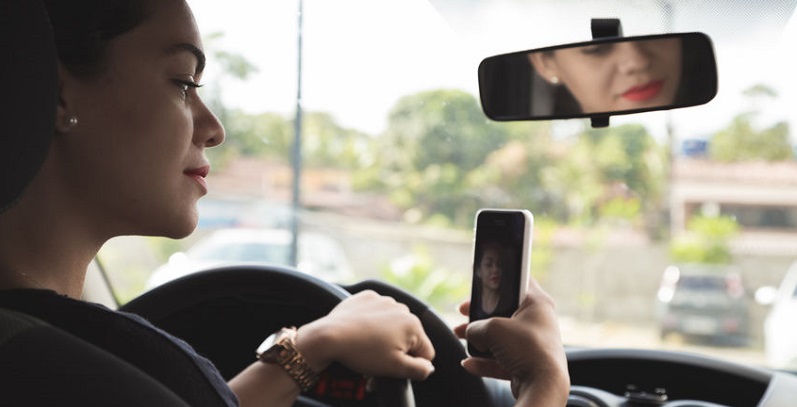Distracted driving accounts for about one-fourth of all the fatalities associated with car accidents, and distraction is believed to be responsible for more than 58 percent of all teen crashes.
Distracted driving accounts for about one-fourth of all the fatalities associated with car accidents.
One of the most important things parents can do to set a good example for their children is to drive safely, but new research published in the Journal of Pediatrics shows that many parents are not only missing a valuable opportunity to demonstrate proper driving behaviors to their children, they are also putting them at risk for injury.
According to the new study conducted by Children’s Hospital of Philadelphia and the University of Pennsylvania School of Nursing researchers, there is a link between cell phone use while driving with children and other risky driving behaviors, including not using a seat belt, not consistently using safety restraints with their kids, and driving while impaired by alcohol or drugs.
About half of all parents with children between the ages of four and 10 talk on their cell phones while their kids are in the car, one in three text and read text messages, and one in seven use social media while driving. Even parents who did not engage in otherwise risky behaviors, such as driving while impaired or not wearing a seat belt, still tended to use their cell phones while driving.
Although further study is needed to determine if parents’ unsafe driving behaviors influence their own children when they begin to drive, the results of the Children’s Hospital/University of Pennsylvania study suggest that family doctors and pediatricians might consider parental driving habits when looking at the overall safety of children.
Too few parents seem to realize that every time their children ride with them in the back seat of their car, they are providing a visible example that their kids are extremely likely to follow. According to another landmark study conducted by the University of Michigan Transportation Research Institute and Toyota, teens’ driving habits are influenced much more by what they see their parents do than what they hear their parents say; drivers’ education class begins “the day a child’s car seat is turned around to face front.” The main takeaway: to keep young drivers safe on the road, always be the driver you want your teen to be.
Children can be a source of driver distraction all by themselves. A 2013 Australian study from the Monash University Accident Research Center concluded that driving with kids in the car is approximately 12 times more distracting for drivers than talking on their cell phones. Common forms of distraction associated with child passengers included turning around to interact with children in the back seat, looking at them in the rearview mirror, and reaching into the back seat to provide them with food or drinks.
Distracted driving accounts for about one-fourth of all the fatalities associated with car accidents; distraction is also believed to be responsible for more than 58 percent of all teen crashes, according to TeenSafe.com. And since there is no accurate way to determine whether distracted driving played a role in an accident, many experts believe that the accidents, injuries, and fatalities related to distracted driving are greatly underreported.
If you sustained serious bodily injuries as the result of an accident involving a distracted driver, contact Colorado personal injury attorney Dan Rosen for a no-cost consultation to discuss the details of your case.

